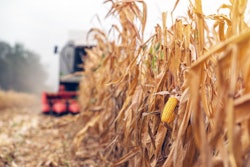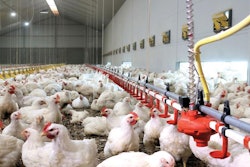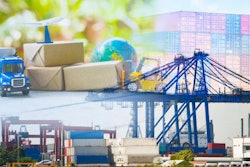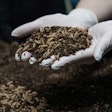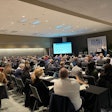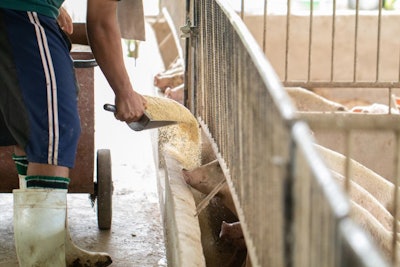
AFIA’s Sarah Novak talks ‘People, Planet, Pigs and Profit’ and the importance of highlighting your company’s sustainability contributions at 2021 World Pork Expo
In early June, I made my return to the trade show circuit, attending the World Pork Expo in Des Moines, Iowa. While on-site, I attended several sessions, but one I think was most relevant for this blog. Sarah Novak, American Feed Industry Association (AFIA) vice president of membership and public relations, addressed a crowd of pig producers to discuss the importance of highlighting their operation’s sustainability efforts — as well as the role feed plays in sustainable animal production.
In the U.S., pig producers feed 62 million tons of feed annually.
“Feed is important to this industry,” she noted. “Seventy percent of your costs are feed related, and of the environmental impacts of swine production, almost half is attributed to the feed side of your business.”
The pig industry is much more efficient than it was in past (61% more efficient than in 1960) — and many pig operations are making strides to improving and reducing their environmental impact — but do their customers and the consumer know about it?
“There are a lot of great things that you’re already doing,” she said. “You may just need to get a little help telling your story.”
Define ‘sustainability’ within your organization
There are several popular sustainability models, e.g. Three-legged Stool, Four Pillars of Sustainability, the 3Ps.
“The most fitting [sustainability model] for this audience is People, Planet, Pigs and Profit,” she said. “You have a great story to tell.”
AFIA defines sustainability as “providing a continuous safe, nutritious food supply for poultry, livestock and fish, and pets in a manner that optimizes environmental quality, and the use of natural resources, while positively affecting the social and economic well-being of our customers, their communities and the industry.”
Novak suggested companies define what sustainability means for their operation and use that as their starting point.
While the animal feed industry plays a major role in sustainable animal agriculture, she stresses the pig industry take ownership of its environmental and public relations challenges and demonstrate that it is, in fact, part of the solution.
Sustainable practices
There are the four AFIA sustainability focal points: reducing energy use in the feed mills, improving animal nutrition, engaging with customers, and supporting our local communities.
Novak notes several sustainability points swine producers can leverage in their messaging:
Use of coproducts and byproducts: The animal feed industry utilizes many byproducts and coproducts, e.g. soybean meal, distiller’s grains, animal fats.
“Where would these products have gone had it not been for animal agriculture? These are great stories to tell,” she said. “When you look at the top five ingredients, I think three and a half of them are byproducts. If it weren’t for livestock and poultry, what would we be doing with them? Where would these be going?”
Thirty-three percent of the ingredients fed in swine rations are byproducts; 40% comes from other industries, she said.
“And that’s a really great message to share — again, a great sustainability story,” she said.
Improved animal nutrition and productivity: From new feed additive solutions to genetics, advancing technologies are improving productivity on the farm while improving sustainability at the same time.
Climate change is a hot topic and will continue to be, likely resulting in more down-chain customers asking for the environmental scorecard, e.g., land use, energy use, etc., of the feed fed to the animals.
“If your packer or processor asks this kind of information, can you provide that?” she said. “I think you’ll see that from nutrition companies, big companies, ingredient companies — all of them will be doing that.”
One of AFIA’s goals is to lobby to allow feed additive products and ingredients that lower greenhouse gas emissions to be able to make those claims in the U.S., where it is currently not allowed.
“We’re really trying to work to get that available so that you as farmers and ranchers have new products that you can use to help your overall production system,” she said.
Community involvement: Donations and other contributions to your local community also qualify as part of a company’s sustainability story.
If your company is not sure where to start, Novak suggests tapping into the resources around you.
“Talk to your suppliers because I know they’re already doing a lot of these great things,” she said. “I absolutely guarantee your feed manufacturer, your feed supplier, your feed partner, your ingredient guy are committed to working with you on this.”
AFIA/IFEEDER aids in feed industry sustainability efforts
The Institute for Feed Education & Research (IFEEDER), AFIA’s public charity, is involved three projects to fill the animal feed industry’s sustainability research gaps.
Its GMO-free feed research project, conducted in partnership with Iowa State University, explores under which, if any, circumstances GMO-free feed would be more sustainable. This will include analysis of land use, feed mill management concerns and related consumer modeling for the price implications for animal proteins and examine the consequences.
Second, AFIA is working with the Global Feed Lifecycle Institute (GFLI) Life Cycle Analysis (LCA) to provide raw feed ingredient data to the Feed LCA database for U.S. companies to use when creating their own LCDs.
“We have done a lot of the major ingredients for U.S. feed. … They’re going to start doing some of the feed additives here soon — but we’re really excited,” Novak said. “Here, a farmer or rancher can work with [their] feed supplier, ingredient supplier, to really think about what it is that you want to do or not do.”
The association is also working on its Sustainability Roadmap project to help midsize and smaller companies document their sustainability efforts and develop their sustainability pledges.
“We’re going to work with a group to help create a toolbox of materials that companies can use to help create their own sustainability pledges,” she explained. “How will they measure it? How will they use it? What are they going to do? Again, it is not to say that [producers] are not doing it — because you are doing a lot of these things — but maybe you are not bringing it up or you don’t know where to start. Our foundation is going to create this package.”
For more information, visit www.ifeeder.org.


